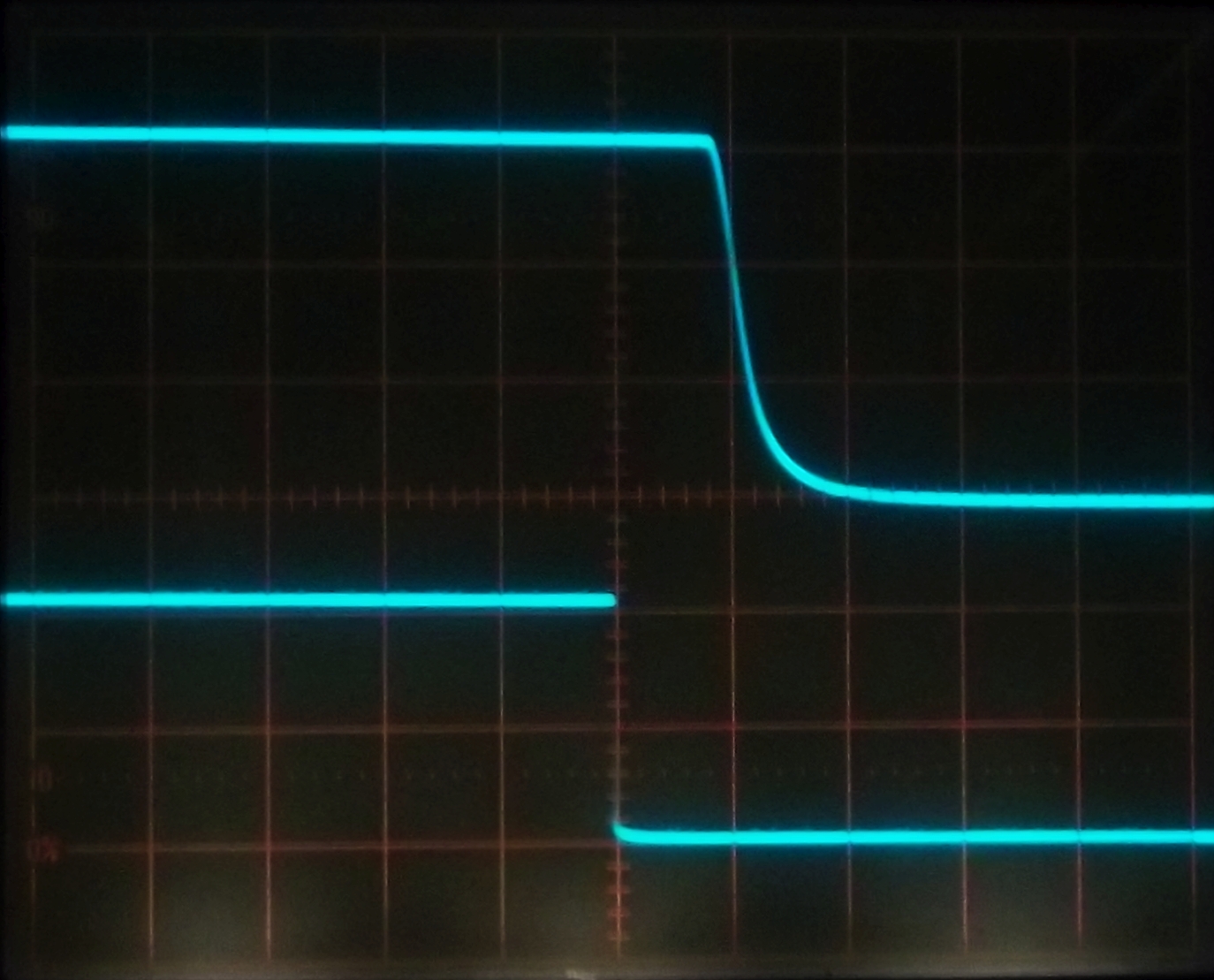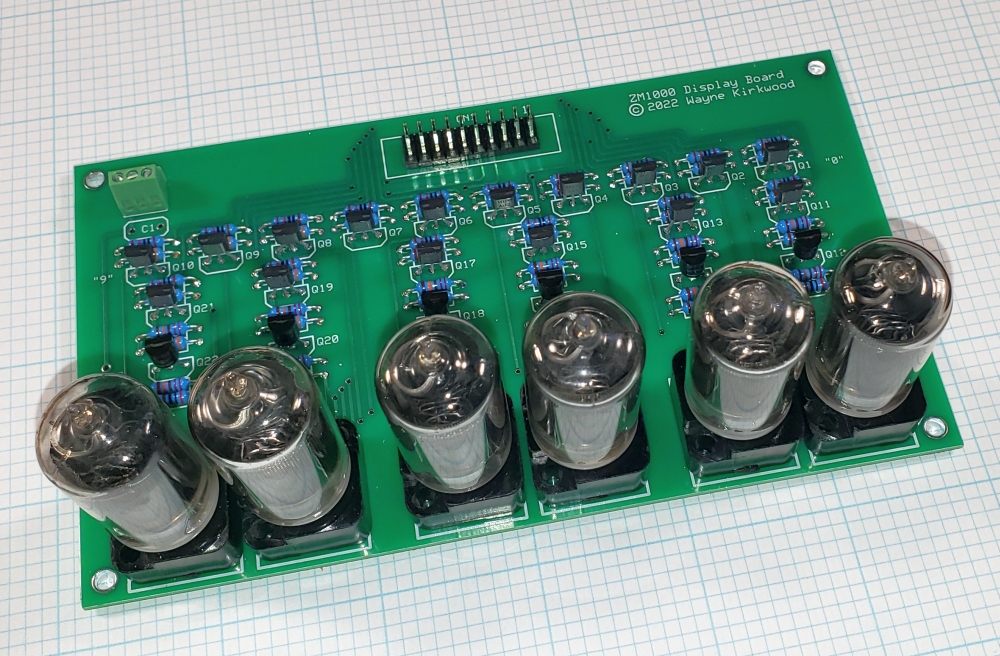I got some BS107 N-CH MOSFETs and tested them with a ZM-1000 tube.
Unfortunately the BS107 has too much off-state leakage and causes some cathode glow.
I substituted the BS170 which previously worked and found that with this particular tube there was also some cathode glow as well even when the Drain is clamped at around 65V.
What also may be different is the power supply.
This experiment was made with a 555-based switcher - it could be that the large amount of ripple in my original HV supply dropped below the strike voltage of the tube.
With the switcher the MPSA42 300V NPN worked fine so it looks like MOSFETs and clamped LV bipolars such as the ULN2003 are risky with certain tubes or supplies.
I also played around with a muxed display approach and tried a classic MPSA92/MPSA42 PNP/NPN anode driver.
The more I think about it the more I like using an Arduino Nano and DS-series RTC board.
With a single 8 bit port I can mux anode and cathode drive for a 6 digit clock.
This is the classic NE555/IRF740-based flyback converter needed to get the +170V needed for the anodes.
It works pretty well being about 80-85% efficient and offers OK regulation.

Note that P1 is correctly-drawn.
In many of the schematics for this circuit the wiper and top of the pot are not connected to each other.
With the base circuit connected directly to the wiper loss of wiper contact causes the supply to run open loop, lose all regulation and go to the maximum output voltage.












